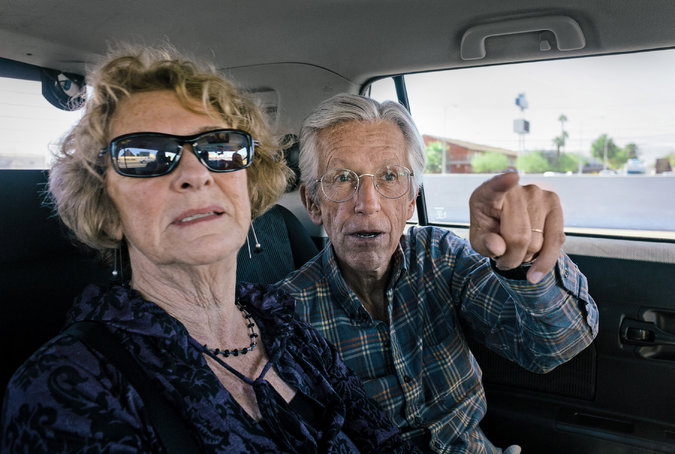Newly retired health care executive, 69-year old Geri Taylor knew something was wrong, but she kept her composure, according to a recent feature in the New York Times.
Starting as a nurse who then rose through the ranks, she knew something was woefully wrong when she didn’t recognize her reflection in the mirror.
In late 2012, she received a diagnosis of mild cognitive impairment (MCI). Geri, with her husband, Jim cope in what they call “purgatory… waiting for something… you don’t want to come.”

Geri and Jim Taylor in October 2014. Credit Michael Kirby Smith for The New York Times*
They welcomed New York Times reporter, N. R. Kleinfield into their lives and he spent 20 months with them observing their rollercoaster of frustrations and joys. The result is an estimated 21,000-word article that’s a worthwhile read for its poignancy, depth of insights, and vulnerable honesty.
Initially, her husband, Jim, couldn’t even make eye contact with her, withdrawing, leaving her to feel alone.
The Caregiver’s Voice REVIEW departs from our usual reviews of books and products to look at this New York Times feature that is gaining a foothold among other media outlets.
Although the word Alzheimer’s is mentioned over 100 times in the article, there is only a reference made to an initial diagnosis of MCI. Despite this, Geri refers to herself as having Alzheimer’s and so does her husband. I found this a bit unnerving because MCI and Alzheimer’s are indeed different. It isn’t until midway in the article (“Since her Alzheimer’s diagnosis…”) and about 60% into the article (the results of her Mini Mental State Exam point to a mild stage of Alzheimer’s) that we get confirmation. Current research reports that half of those diagnosed with MCI end up with Alzheimer’s disease.
She tries to keep composed and not let the disease bring her down. In the article, she says, “this disease was bottomless in its unhappiness if you let it take you there.”
The Taylors wait six months to try out her new life post diagnosis before sharing the news. This gives them an opportunity to deal with their own emotions first. Then they tell their children individually allowing each to have his or her own unique reaction. What a great idea!
Ultimately, she gets the results of her gene test indicating both copies of ApoE4. It surprises her to learn that she inherited the gene from both her parents even though only her father had it. Her aunt and cousin were also diagnosed with Alzheimer’s. It also saddens her to learn that her son has likely inherited the Alzheimer’s gene.
She participates in clinical trials. Good for her! All who are willing to participate help further research. I found the following interaction between her and the neurologist to be funny. The Taylors ask how to pronounce the name of a drug. The doctor isn’t sure, “Drug companies like names to be as difficult to pronounce as possible so people will use the brand name. That’s what I heard.” How true! I ask doctors too and the response I get is either, “I’ve been pronouncing it this way” or “This is the pronunciation I’ve heard.”
We are fortunate that Geri Taylor agreed to open her life shortly after diagnosis and that the New York Times was willing to do an in-depth feature. As reporter Kleinfield notes in a related background article:
I needed someone introspective who could distill what was happening inside the brain. Ms. Taylor was ideal, both bright and reflective. She was not reluctant to talk generously about what the disease was doing to her. In fact, she enjoyed doing so. Her insights enabled me to comprehend the movement of Alzheimer’s through her mind.
As more voices with dementia are heard, awareness continues to build, while the we chip away at the harsh edges of the stigma.
For the complete article including short videos, click on http://nyti.ms/1O2DjCa
For the background of this feature visit: http://www.nytimes.com/2016/05/02/insider/tracking-a-case-of-Alzheimers-after-the-diagnosis.html [TCV Update 2/14/2022 NYT article, subscription required]
*Photo used without permission.
Thank you, Ann Vanino for sending me this New York Times article.








